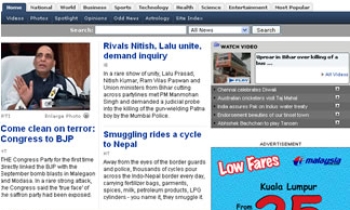In the good “old world†embargoes used to be timed particularly to print deadlines of newspapers. But that was the old world; the world itself has changed – digitalisation has accelerated news cycles. The ancient relic called the “news embargo†ought to have disappeared by now, but it hasn’t. A researcher now says this will take time, and the embargo still makes sense.
Sonja Gruber, an editor at the business department of the Austria Presse Agentur (APA) in Vienna, says that the fragmentation of news consumption habits boosted by the rise of mobile devices is going to disrupt the embargo. Sources will have to think more about the issue of timing, as they will still want to maximise the impact of their message. The media context behind the embargo is only going to become more complicated, Gruber says in her paper ‘News Embargoes - Under threat, but not extinct: How an ancient press tool survives in the modern media world’, published by the Reuters Institute for the Study of Journalism (RISJ).
As Gruber says in her introduction:
In the “old worldâ€, embargoes used to be timed particularly to print deadlines of morning or evening newspapers. But these days are long gone. Not only do digital technologies permit a much faster distribution of news, but also the World Wide Web has put an end to deadlines. Just like established media outlets, every corporation, institution and every private Web 2.0 user can publish information 24/7. Today, a press release can immediately get coverage and spread on the internet within minutes. If a newspaper printed the same story the next day, it would be already outdated.
Science journalism, she feels, is probably the field in which the embargo system has been most disputed and at the same time is most likely to continue. For leading science journals, especially US-based ones, news embargoes have been a core part of their media policy since the 1920s. Journals’ editors still push forward the same arguments – that journalists have enough time to prepare their stories properly and, if necessary, do additional research. But there’s a catch, as Gruber emphasises: if the journals can maintain control over the science agenda in mass media, their reputation and circulation is protected.
The other sphere where the embargo may continue is financial journalism. Gruber writes, “Institutional embargoes are very much put under pressure by social acceleration, first and foremost by the speeding-up of financial markets that has been driven by the increase of algorithmic (high frequency) trading. If market-relevant data was leaked just a fraction of a second too early, individual traders could make huge profits. Financial newswires are in a special position because they do not only serve media clients with news stories, but also sell economic data to financial customers. Thus being first or at least as fast as the rivals is and will remain crucial for them.â€
“One main factor that has complicated the issue of timing is the fragmentation of news consumption habits which has been boosted by the rapid growth of mobile devices: The digital audience follows breaking news in real time rather than waits for the next day’s newspaper. Therefore the old, well-known consumption peaks (newspapers are strong in the morning, TV has its prime time in the evening) are ceasing to exist,†she says.










